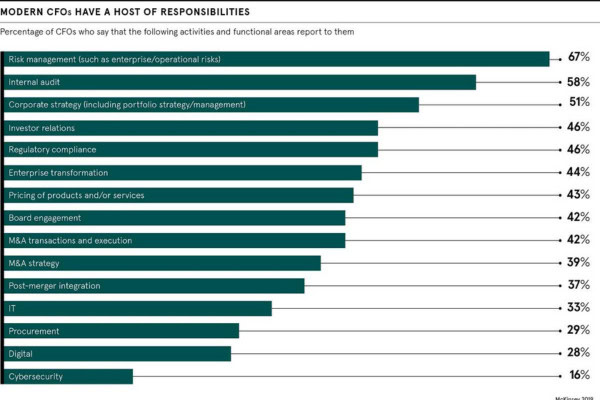Using sound management reporting and project by project accounting would make it easier for construction companies to get funding from banks and other financial institutions to grow and scale their businesses, says Simon Parkins, a construction industry accounting specialist.
Many construction businesses don’t invest in good management information, says Simon, who has over 20 years of experience in the construction sector and who is now a part-time CFO with The CFO Centre.
Instead of making informed decisions about how to run the business based on facts, Managing Directors and their boards tend to rely too much on gut instinct, he says. That makes banks and other financial institutions wary.
Why banks and financial institutions don’t like construction companies
Getting access to external finance has always been challenging for construction companies because it’s perceived to be a very high-risk sector, says Simon.
The collapse of construction giant Carillion with £7bn debts in 2020 has made lenders even more cautious about providing funds to companies within the sector.
“Carillion going bust made it even more difficult than it already was,” he says. “There were already banks who would not touch construction clients, but now even the ones who were open to construction companies have put a lot more hoops in place for them to jump through.”
SME construction companies are not particularly good at investing in management information or accounting software that’s suitable for the industry, so they are often the first things Simon recommends they do.
Having access to the banks and financial institutions that will lend to construction companies, and knowing what assurance and MI they want to keep that lending position in place, is really crucial.
“I’ve got connections with some really good lenders who are not put off by construction, and they’ll improve their rates and fees on the basis that The CFO Centre is involved,” Simon says. “They know that we will ensure that the management information they need is there.”
“A lot of construction companies simply do not understand what the banks need to get finance, which is where we can help.”
Another reason why lenders find construction companies less appealing than other businesses is that the profit margins are often quite low.
Many of the top construction companies work with tiny margins of 4% to 5%, while SME construction companies are more likely to have margins of between 10% and 25%.
Using project by project accounting practices
Many SME construction companies fail to put project by project reporting into place. This results in poor MI for the business, but also in an erratically performing profit and loss position, which scares lenders.
“A bookkeeper or accountant will put together management accounts for the business, but they often report on the whole business and not on individual and distinct projects.”
“The key to success in construction is really understanding project by project performance, so you can see which ones are performing, which ones are not, and which ones contain the risk. Doing that brings the performance of the business into clear focus,” he says.
“I worked with one client with a Commercial Director who the Managing Director regarded as performing quite well. He was delivering reasonable but not great numbers, but there was no transparency to what he was saying at the monthly board meetings. When we put project by project reporting into place, he had nowhere to hide. He was found to be deficient and covering up lots of problems and issues from the Managing Director.”
“Within four months of me coming on board as a part-time CFO, the Commercial Director went from a position of nearly being assigned share options and some ownership of the company to the point where it was revealed he was fundamentally underperforming and probably losing that business something in the region of £100k to £150k a month.”
Construction accounting is very different from standard accounting and many good accountants get it wrong when tackling construction accounts for the first time, says Simon.
“As accountants, traditionally, we take the ledgers, we adjust for income not recorded (bringing in work in progress) and then we adjust for missing cost (accruals). Do this for a construction company without looking at individual project performance at your peril.”
“Traditional accounting in this way is problematic, and the following issues were common to the majority of construction SME clients I have worked with:
- Making income and cost adjustments without looking at individual project performance means there is no sense to check/validate the adjustments being made.
- The majority of risk tends to materialise or manifest itself at the end of a construction project, and so you need a system of reporting that reflects this risk and adjusts accordingly.
- The ability of the business to forecast the expected margin at the end of each project is often poor to moderate.
Clients believe that when they bring the income and cost adjustments together, the accounts will be accurate. What you tend to find is that income is optimistic and overstated and that not all outstanding costs are identified. Coupled with poor visibility of the likely financial outcome of the project, and no consideration for risk, the accounting profit tends to be overstated.”
Too few construction companies allow for the problems that inevitably occur during a project.
“Nine times out of ten, profit-related things go wrong at the end of the construction project. There might be:
- Liquidated damages where you’re actually on penalty clauses to finish the project on time,
- Remedial works, an ongoing obligation to fix any subsequent problems which materialise with the work you’ve carried out,
- Snagging at the end of a job is when the client will point out problems with the work,
- Many companies underestimate the amount of work required to fulfill the snagging list for the client to be 100% happy.”
“It’s also just an industry in which people haggle at the end of the job.”
It’s for all these reasons that Simon tries to persuade clients to hold back some of the profit.
“I tell them to beware of ever taking the full margin until the client has signed the project off and physically paid the bill.”
While big construction companies have the systems and processes to put that all into place, many SMEs don’t have the knowledge or resources to do these things properly.
They might have accountants or bookkeepers, but they often do not understand well enough how to allow for how the construction industry works.
“It’s quite hard for an accountant without construction experience to know what to do or to understand the risks involved in construction,” he says.
“I have worked with many of the blue-chip companies in the construction sector for the past 20 years, and there are lots that I’ve learned along the way. A finance director in construction cannot sit in an ivory tower playing with spreadsheets. You’ve really got to understand project performance and how things are going on operationally.”
One client has a Commercial Director who was advising the monthly unbilled income figure and working with the accountant on the missing cost figure. They were adamant that the adjustments they were making were correct. But they had no mechanism for sense checking whether the adjustments were logical when bought together in the accounts. By introducing project by project reporting Simon showed them that their adjustments were very often incorrect. On one project they were reporting a 75% margin, on a project they were forecasting would make 35%. Moreover, the forecast proved to be inaccurate, and by the time the job was complete the actual margin achieved was 23%. With the job not even halfway completed they were already taking £250K profit on a job that ultimately only made £130K, and yet they were 100% convinced that what they were reporting was accurate.
Why construction companies need external funding
Much of the work construction companies do initially is self-financed with extended payment terms and that can put pressure on cash flow.
Projects can also go into a dispute which means cash flow can stop altogether.
“I had a client with a modest annual turnover of £6m who got into a dispute with a customer who then withheld a massive £1.2m. The work was delivered, but the £1.2m was withheld because a single piece of paperwork wasn’t delivered by a deadline.”
Many of Simons’ clients are SMEs who are working on four to eight live projects at any one time and are therefore highly exposed to each client.
“Their clients can quite often just withhold money on a pure technicality. The amount of cash they need for business operations hasn’t changed but their expected cash inflows can suddenly dry up. It is a difficult sector from that point of view.”
It’s therefore often a good idea for the construction company to have lending facilities on standby as a contingency to cope with any issues that may materialise. Approaching the bank, at short notice and with an urgent need for funds is rarely easy of a successful conversation.
If you’re a construction business needing some help/advice on getting external funding, reach out to us today at [email protected] and one of the team will be able to book a call with one of our dedicated Regional Directors to discuss more.






